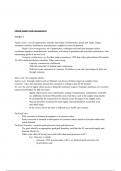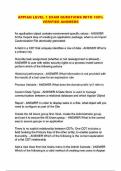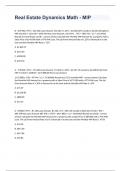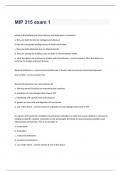Exam (elaborations)
Organic Pharmaceutical and Medicinal Chemistry Overview
- Course
- Institution
Organic Pharmaceutical and Medicinal Chemistry Overview Organic Chemistry - AnswersOne of the five main branches of Chemistry that deals with carbon containing compounds. Hydrocarbons - AnswersCompounds consisting entirely of hydrogen and carbon. Vital Force Theory - AnswersFormerly defined ...
[Show more]












